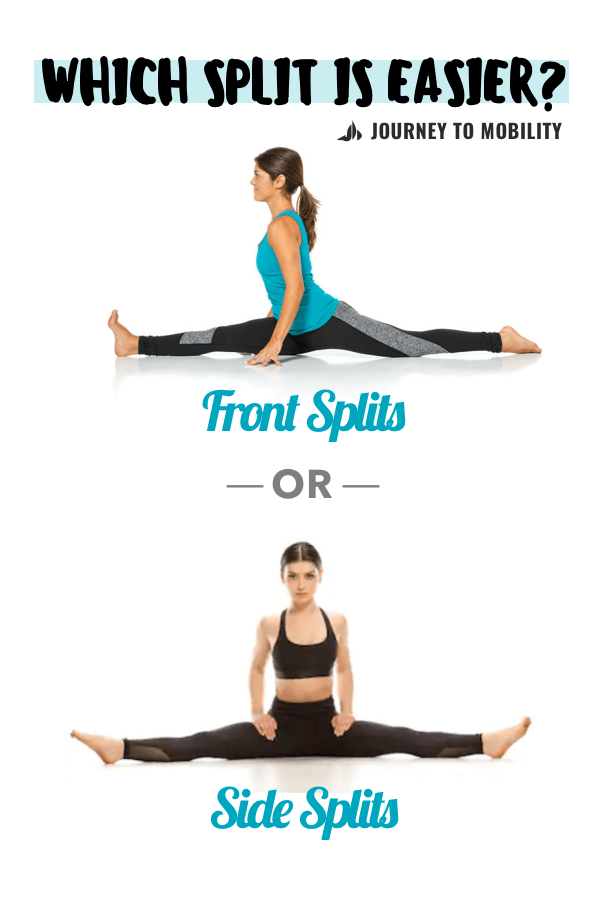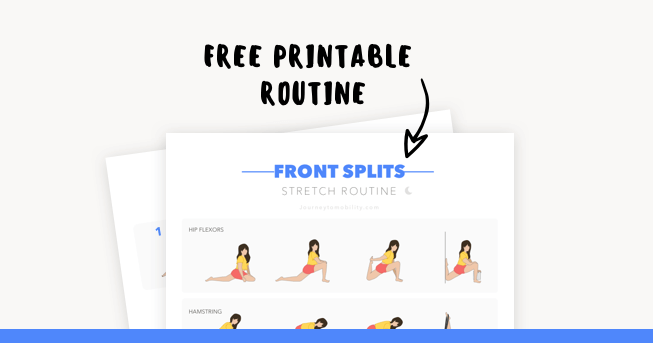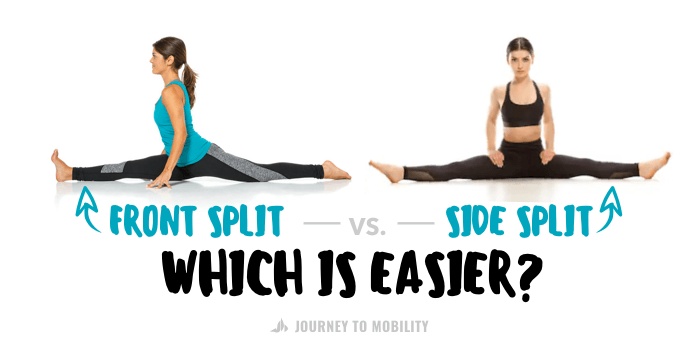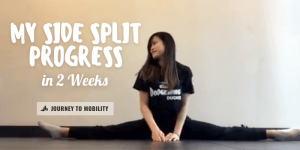Getting your splits is often seen as the ultimate test of flexibility. As a beginner, it can be confusing to know what the difference is between a front split and a side split. What square hips are and which muscles you need to actually stretch in order to reach your goal. In this article, I will cover which type of split is easier of the two and why!
Overview
- 3 Types of splits
- What does square your hips mean?
- Stretching with square hips
- What muscles are used in a split?
- Is a front or side split easier?
3 Types of Splits
There are three types of splits that anyone can learn to do with a lot of stretching and practice.
True Front Split
The True Front Split (Square) is achieved by sitting with your legs straight in opposite directions, while the hips remain square* (1). The core is engaged, back is in a neutral position with the knee and ankle of the rear leg pointed directly down towards the ground. Training for the true front splits requires greater hip flexor mobility in order to actively draw your hips down and maintain alignment in the hips. This variation is most common among dancers and gymnasts who need greater flexibility in their hips to create shapes and lines with their body.
Open Front Split
The Open Front Split (Turned out) is often easier to get for most people. For this variation, the hips are open (not squared) and the rear leg is turns out to the side. Having the back leg externally rotated outwards allows for a greater range of motion. This is commonly practiced by martial artists to want to achieve higher kicks and dancers during performances to create enlongation.
Side or Middle Split
The Side Split, Middle or Straddle Split is achieved by sliding your legs out as far as you can on both sides of your body. A full side split is getting your inner thighs to be flat on the floor. Check if you can do the splits with this side split test!
To deepen the stretch, walk your hands forward while keeping your back straight. Doing the side splits requires you to stretch and strengthen your inner thighs.
Other variations of the split include the oversplit, standing front split, wall split, standing side oversplit. You can start by determining what your goals are.
What Does Square your Hips Mean?
To get the best results when stretching, it’s important to understand what it means to ‘keep your hips square’.
Square hips is when both of your hips and your pubic bone are in alignment (2). Your hips and shoulders should both face forward.
To check if your hips are square, place your hands on your hips. If both your hands are aligned (imagine holding onto a steering wheel) then your hips are squared. If one hand is positioned in front of the other then your hips are open.
Stretching with Square Hips
When doing stretches for splits, always start with a good warm up and remember to keep your hips square. This ensures that you are stretching and engaging your muscles on both sides. It is also safer to get in and out of deep stretches when your joints are properly aligned. Training with open hips creates uneven weight distribution and increases the risk of injuring yourself while stretching.
What Muscles are Used in a Split?
The type of split you choose to train for depends on what your goals are. Each variation requires the activation of different muscles around the hips, hamstrings and quads. This means that being able to do one type of split or variation does not make it easy to do another type of split. However, understanding what muscles are used when doing your splits can help you get results faster.
Side Splits
According to anatomical research (3), stretching for the Side Split requires you to stretch 4 adductor muscles, 1 hip flexor and the medial hamstrings. In total, you can perform 5 stretches to target these muscles.

Front Splits
For the Front Split, you need to stretch muscles on the front and back leg on both sides. For the back leg, there are 6 hip flexors and 4 adductor muscles. In the front leg, you would need to stretch the medial and lateral hamstrings, head of adductor magnus, glutes, and piriformis. There are 8 muscles that you would need to stretch in back leg and 6 more in the front leg. In total, you would need over 12 stretching exercises to get your front splits just on the one side.

Is a Front or Side Split Easier?
Based on an anatomical standpoint, the side split requires a fewer number of muscles to be stretched.
However, most people report that it is easier to get the front splits. Common stretches such as lunges and hamstrings stretches activate muscles for the front splits. The side splits require you to stretch muscles you may not normally stretch like the inner thigh and groin.
Thus, the side split is easier to get but it’s more common to stretch muscles required to do the front splits. From personal experience, training for the front splits first helped improve my overall flexibility which helped lower my side split from 7 inches to 2 inches!
Takeaway
The side or middle splits requires 5 muscles to be stretched compared to the front splits where you need to stretch 14 muscles per leg.
Since stretches for front splits are more common (ex. lunge variations, hamstrings, calves stretches), most people report that it’s easier to do front splits.
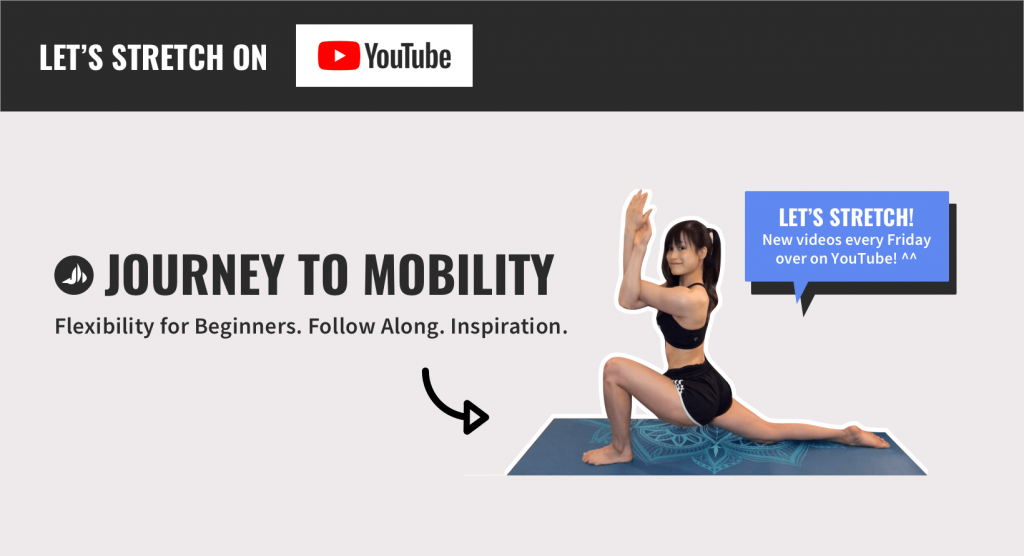
See My Flexibility Progress:
- My Front Splits Journey (5 months)
- Side Splits in Just 2 Weeks
- Pancake Stretch Progression
- Back Bending Journey (Before Pictures)
